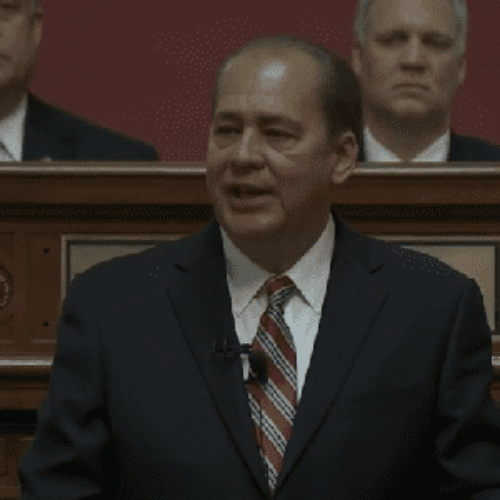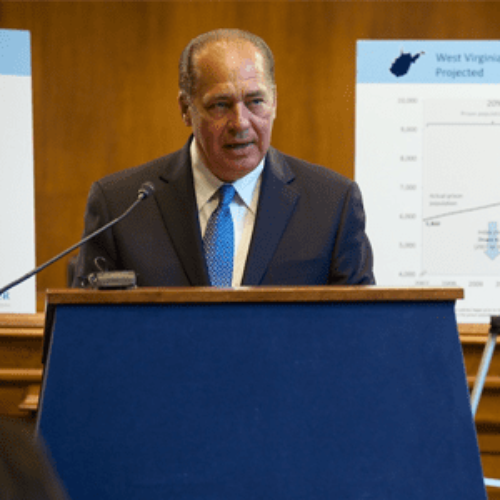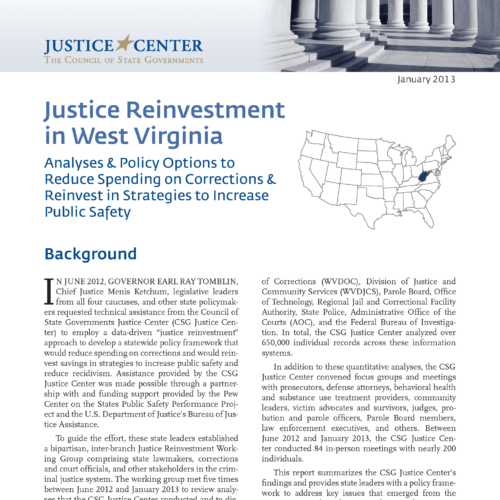Justice Reinvestment in West Virginia
The Problem
Between 2002 and 2012, the number of people in West Virginia’s prisons increased 50 percent, with the prison population projected to grow an additional 24 percent by 2018.
How JRI Helped
From 2012 to 2013, the CSG Justice Center worked with state leaders in West Virginia to develop data-driven policy options designed to reduce corrections spending and increase public safety. CSG Justice Center experts conducted a comprehensive analysis of West Virginia’s criminal justice data and interviewed stakeholders across the criminal justice system. In 2013, West Virginia enacted Justice Reinvestment legislation, which included policies designed to
- Ensure that supervision practices focus on individuals most likely to reoffend and respond to probation and parole violations with swift, certain, and more cost-effective sanctions;
- Reduce parole hearing delays and mandate that people convicted of violent offenses receive one year of supervision upon release from prison; and
- Require the use of a pretrial screening instrument in jails that predicts risk of flight and risk of reoffending.
Implementation and Impacts
By 2022, the total number of individuals incarcerated with a prison sentence had fallen by almost 14 percent, though much of this decline is attributable to the COVID-19 pandemic. Just prior to the pandemic, however, there is evidence that these policies were containing prison population growth in the state. In December 2019, the actual prison population (6,800 people) was nearly identical to the population in December 2013 (6,785 people), which is approximately 24 percent lower than the baseline prison projection in effect at the time of SB 371’s enactment. These policies helped the state avert $200 million in construction costs between 2014 and 2018.
In addition, the state invested $11.1 million between 2014 and 2017 to support the expansion of substance use treatment and services for individuals on probation, parole, and drug court supervision. Funding and program referrals are managed through local Day Report Centers to ensure coordination across the various behavioral health providers and local corrections agencies.



















